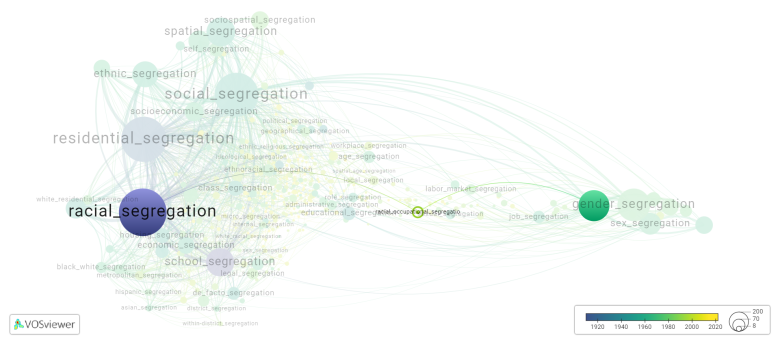Racial occupational segregation
Date and country of first publication[1]
2003
United States
Definition
Racial occupational segregation refers to the unequal distribution of different racial or ethnic groups into different occupations. It is a pattern that can be observed in many societies and has significant social, economic, and political implications.
Racial occupational segregation can occur for various reasons, including historical discrimination and inequality, cultural and social norms, education and skill disparities, and systemic biases within certain industries or sectors.
This segregation often leads to economic disparities between racial groups, as certain occupations tend to offer higher wages and better opportunities for career advancement. It also perpetuates stereotypes and biases, making it more difficult for individuals from marginalized racial groups to break into higher-paying or prestigious positions.
Research has found that racial occupational segregation persists in many countries, including the United States. For example, African Americans and Hispanics are often overrepresented in lower-paying service and manual labor jobs, while Asian Americans tend to be overrepresented in professional and technical occupations.
Addressing racial occupational segregation requires a multi-faceted approach that includes improving access to quality education and training, reducing discrimination and biases in hiring practices, promoting diversity and inclusion in the workplace, and implementing policies and programs that support equitable opportunities for individuals from all racial and ethnic backgrounds.
See also
Related segregation forms
Racial occupational segregation is frequently discussed in the literature with the following segregation forms:
occupational segregation, racial segregation, gender segregation

Visualization based on the research
For the complete network of associated segregation forms, see:
- First year of publication https://tinyurl.com/2235lkhw
- Louvain clusters https://tinyurl.com/2d8wg5n3
- Betweenness centrality https://tinyurl.com/223udk5r
- Disciplines where segregation forms first appeared https://tinyurl.com/244d8unz
References
Notes
- ↑ Date and country of first publication as informed by the Scopus database (December 2023).
At its current state, this definition has been generated by a Large Language Model (LLM) so far without review by an independent researcher or a member of the curating team of segregation experts that keep the Segregation Wiki online. While we strive for accuracy, we cannot guarantee its reliability, completeness and timeliness. Please use this content with caution and verify information as needed. Also, feel free to improve on the definition as you see fit, including the use of references and other informational resources. We value your input in enhancing the quality and accuracy of the definitions of segregation forms collectively offered in the Segregation Wiki ©.
Racial occupational segregation appears in the following literature
Price-Spratlen T. (2003). The Urban Context of Historical Activism: NAACP Depression Era Insurgency and Organization Building Activity. Sociological Quarterly, 44(3), 303-328+ii. University of California Press.https://doi.org/10.1111/j.1533-8525.2003.tb00535.x
White N.E., Wolaver A.M. (2006). Chutes and ladders: Migration and male racial occupational segregation. Journal of Regional Analysis and Policy, 36(2), 161-170. https://doi.org/
Gabriel P.E., Sclimitz S. (2014). A longitudinal examination of racial differences in occupational distributions among prime aged males in the United States. Economics Bulletin, 34(1), 106-114. Economics Bulletin.https://doi.org/
Salardi P. (2016). The Evolution of Gender and Racial Occupational Segregation Across Formal and Non Formal Labor Markets in Brazil, 1987 to 2006. Review of Income and Wealth, 62(), S68-S89. Blackwell Publishing Ltd.https://doi.org/10.1111/roiw.12159
